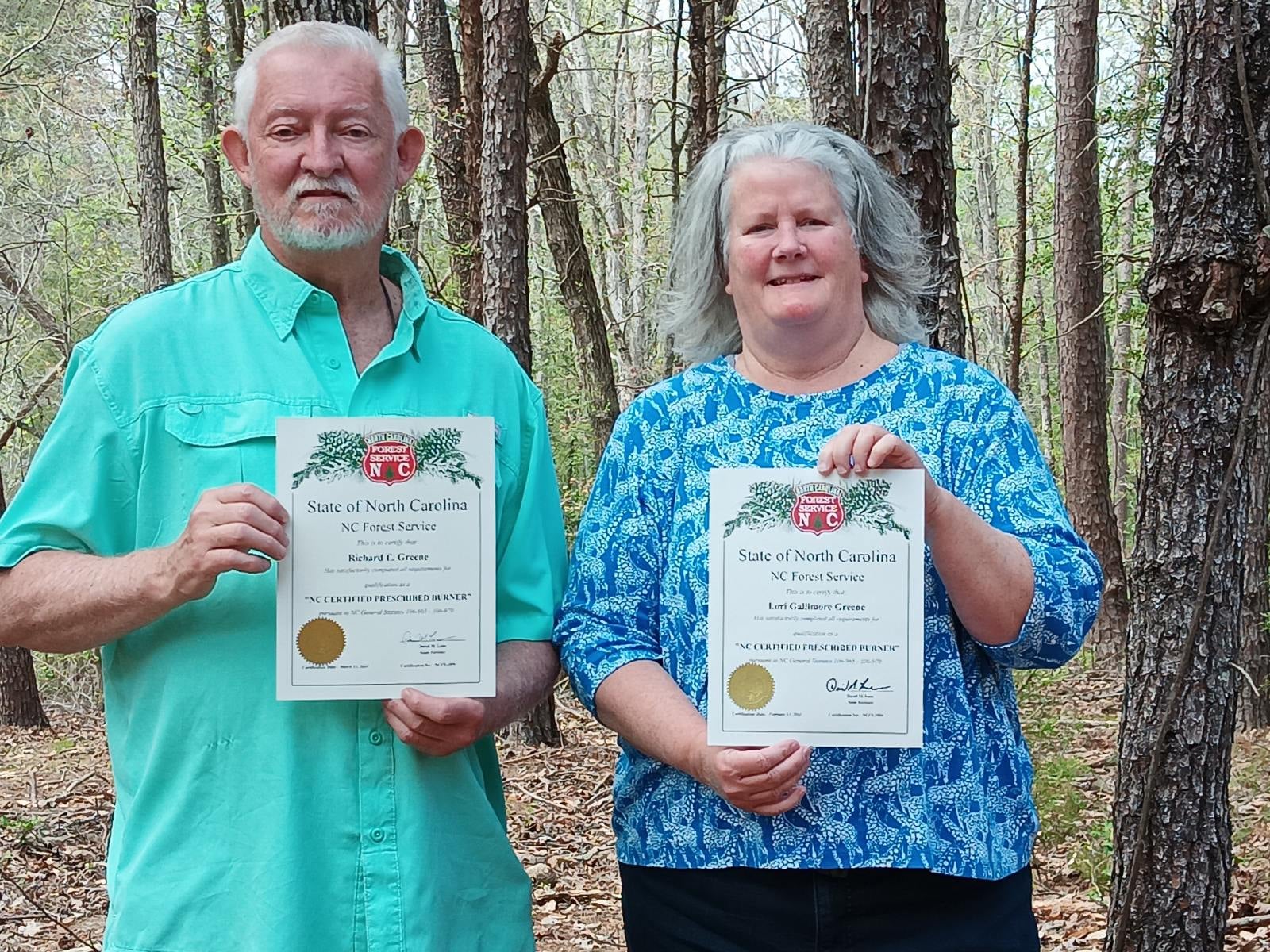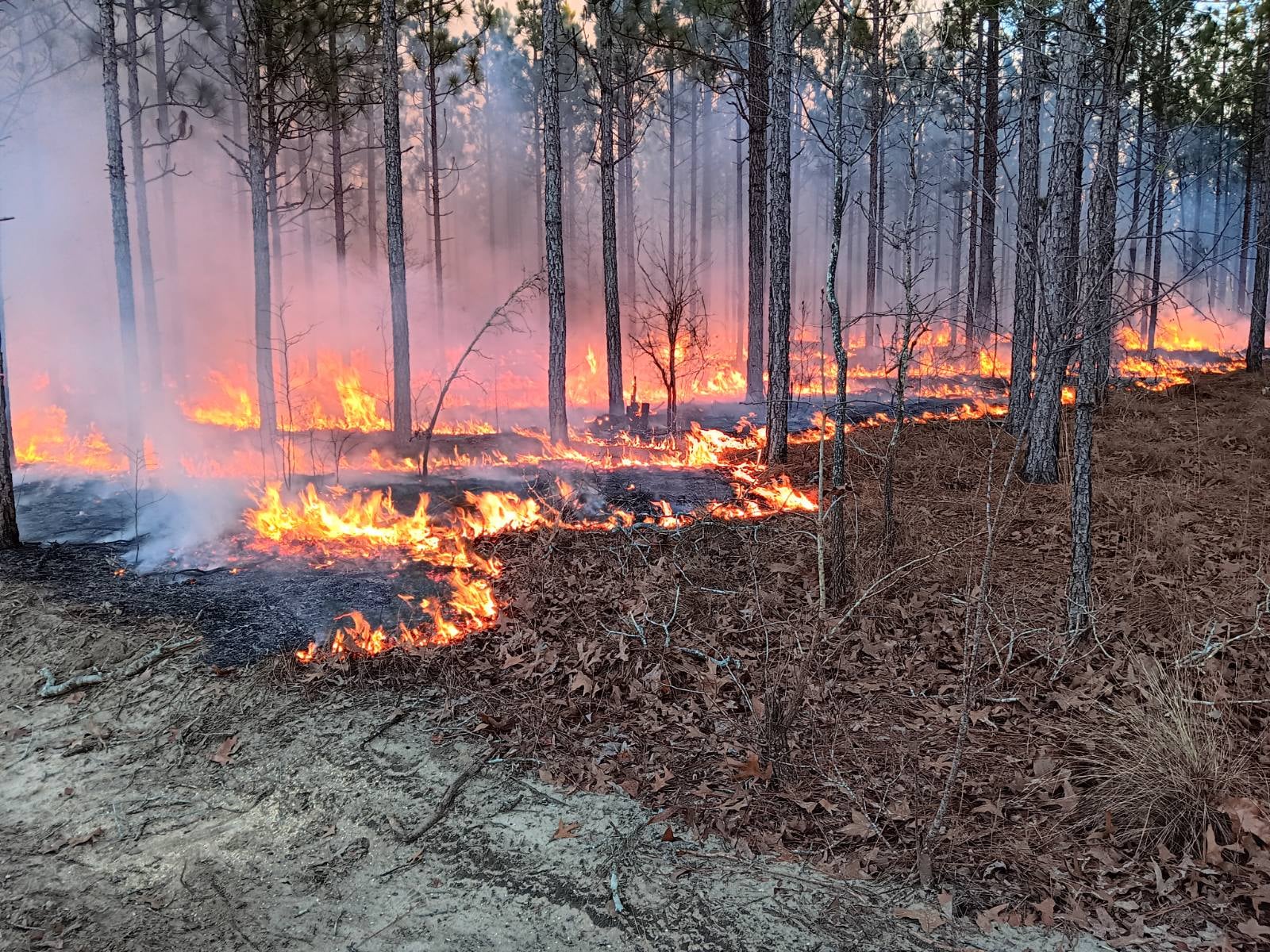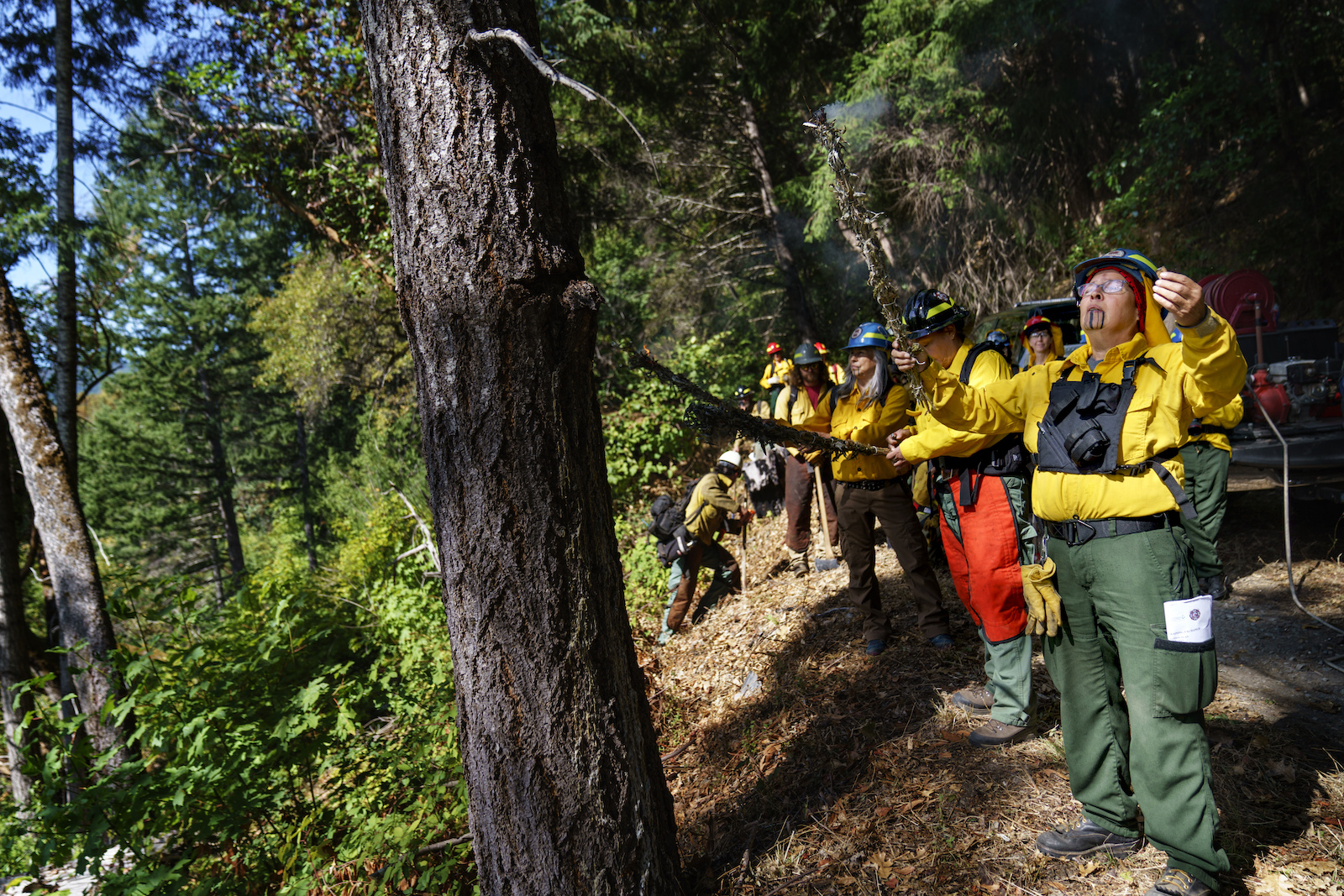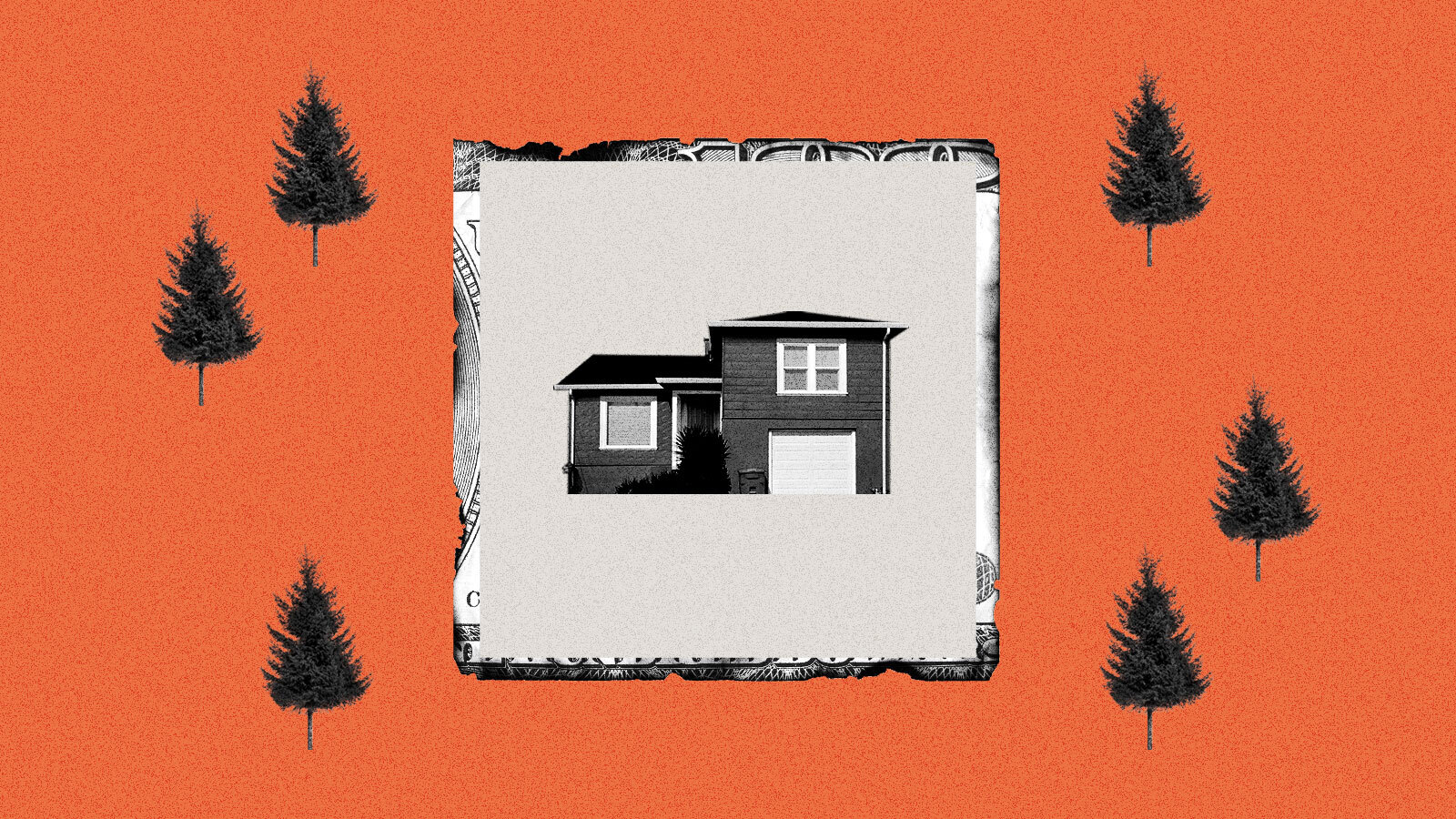Courtney Steed often burns barefoot. It is, in part, a practical choice. Setting fires in the Sandhills of central North Carolina requires an understanding of moisture levels in the scrubby underbrush, and she gets a better sense of it in bare feet. But for Steed, who is Lumbee and leads the tribe’s Cultural Burn Association, it’s also about forming a connection with the Earth and with her relatives. “I’m positive,” she said, “they didn’t wear fire boots.”
Mention wildfire, and most people picture the Western U.S. And while it’s true that in recent years those states have burned at a frightening rate, fire has long been a destructive force in the East as well. That wasn’t always so. For more than 10,000 years, the Lumbee, like many Indigenous peoples, used controlled burns to promote healthy ecosystems and clear brush and tinder. That practice was all but eliminated as colonization and government-sanctioned genocide forced tribes from nearly 99 percent of their land. Some states, including California, outlawed controlled burns, and in 1905, the U.S. government made fighting wildfires at all cost its policy.
The benefits of controlled burns are well established, and the practice, along with other Indigenous land management techniques, has seen a resurgence in the West. Now it is becoming increasingly common in the Southeast as people like Steed restore fire to a region that desperately needs it.
Organizations like the Cultural Burn Association have been working with landowners to set portions of farms and homesteads alight. Such efforts have been augmented by those of the Southern Region of the U.S. Forest Service, which has, over the past five years, burned an average of more than 1 million acres annually. But even that isn’t enough to match the historic scale or frequency of wildfires there. The country’s biggest increase in large burns over the past two decades occurred in the Southeast and central Appalachia, where the incidence of major fires was twice the number seen between 1984 and 1999. Each year, some 45,000 wildfires scorch 1 million acres of the region, which spans 13 states.
All of this poses a grave threat, because population centers like Asheville, North Carolina, and Savannah, Georgia, have little to no buffer between communities and the forests alongside them, an area called the wildland-urban interface. In North Carolina, for example, 45 percent of the state’s 4.7 million homes lie within that zone. But restoring Indigenous burns isn’t as straightforward as it is in the West, because 86 percent of the region’s land is privately held. Compounding the challenge, many people consider fire a threat to be extinguished quickly. Even those willing to ignite their property could wait years to do so.
“The Forest Service here has a backlog of several hundred landowners, and they’re never going to get to burn for them. They can’t; they don’t have the capacity,” said Steed. That leaves groups like hers as their only option, and “If we can’t do it, it’s going to have dire consequences.”

Across the country, drought, higher temperatures, and changing precipitation patterns have made fires larger, increasingly frequent, and more intense. These changes are particularly worrying in the Southeast, given that some 90 million people live there, many of them in proximity to the wildland-urban interface, or WUI.
“The wildland-urban interface is the area where we tend to see the most risk and destruction from wildfires to human life and property,” said Victoria Donovan, assistant professor of forest management at the University of Florida and lead author of the study that found the Southwest experienced the biggest increase in large fires. “It’s extensive, it continues to grow, and it’s predicted to continue that trend in the future.”
Of the five states with the greatest number of homes in this danger zone, two are in the Southeast: Florida (which has been actively using controlled burns since 1971) and North Carolina. A third, Pennsylvania, abuts it. The threat is no less acute elsewhere: In South Carolina, 56 percent of all housing sits within the WUI. In West Virginia, it’s nearly 80 percent. Big cities are not exempt, either; in Mecklenburg County, which includes Charlotte, North Carolina, 11 percent of homes lie within it.
Despite the elevated risk, many homeowners don’t recognize the danger. “They don’t associate these regions with large wildfires; we think about that happening out west,” Donovan said. “So, people don’t prepare for them the same way they might be preparing for, say, a hurricane.”
Without mitigation, she added, major fires will be a foregone conclusion in a place where aggressive suppression has created a large accumulation of fuel and conflagrations that are hotter and more difficult to suppress. “You have these dynamics playing out in the region, then you throw in changes in climate and potentially warmer and drier conditions,” Donovan said, “and you set yourself up for more destructive wildfires.”
Such dynamics played out in April, 2023, when a blaze in North Carolina’s Croatan National Forest jumped from 7,000 acres to 32,000 in two days and burned for 10 weeks. In 2016, the Great Smoky Mountain fire killed 14 people, destroyed 2,500 structures, and caused $2 billion in damage in eastern Tennessee. That blaze sparked new interest in controlled burning, and was a flashpoint for the creation of organizations dedicated to restoring that Indigenous practice.

Research shows that low-intensity fires like those the Lumbee and other tribes have traditionally used can reduce wildfires by 64 percent in the year following a controlled burn. Their use, coupled with selective clearing of smaller trees and underbrush in another Indigenous technique called thinning, reduces the severity, intensity, and tree mortality of wildfires.
Even after the government banished controlled burns, inhabitants of the Sandhills continued using them. “My mom was born in 1920, and she would talk about fire the same way you’d talk about a thunderstorm,” said Jesse Wimberley. “It was just something that happened in the Southeast.” In the near-decade since Wimberley launched the North Carolina Sandhills Prescribed Burn Association, or PBA, he has worked with some 700 landowners. “I do 70 burns a year, easy; this year I’ve done 75 since January, and had more than 250 landowners with a drip torch in their hand.”
Lori Greene’s land east of Charlotte has for 30 years teemed with trees planted to harvest longleaf pine needle straw. Instead, the land went unmanaged, providing plenty of fuel for a fire. After hearing Wimberley’s “spiel” at a meeting of local landowners not long ago, she committed to burning even though she was “really intimidated, and really afraid things will get out of hand.” She and her husband became certified burners, and one evening last year they gathered with friends to set the pines alight.

“Some of my neighbors, I don’t think they were too happy,” she said. One of them notified the fire department, which knew of the burn ahead of time. With the trees cleared, their attitudes seem to have changed. “It looks good,” she said. “I think they’re OK with it.”
Steed worked with Wimberley and the Sandhills PBA before leading the Cultural Burn Association. The Lumbee tribe hosted its inaugural burn in December and has lit more than 80 since then. The fires are “the first step in longleaf [pine] restoration,” she said. The organization has invited anyone with an interest to attend its cultural burns and “watch us hit that reset button,” Steed said. “Then they came out and we planted longleaf plugs and had a native grass planting.”
The Eastern Band of Cherokee Indians is restoring managed fire in the western end of North Carolina to encourage the growth of white oak saplings and rivercane, a traditional weaving material. Fire provides “everything from basket material to food to medicine,” said Tommy Cabe, the tribe’s forest resource specialist, and improves the health and quality of the region’s watershed. It’s also been a cultural touchstone for generations of his people.
“There’s a reciprocal relationship,” said Cabe, who holds a degree in forest management and is working with the Forest Service to restore culturally significant plans on the tribe’s land. “It’s not solely to reduce fuel loads. Fire has a heartbeat. Fire is like a relative. The intention is to have a relationship.”

His tribe is uniquely poised to reestablish that relationship because, like the Lumbee, “we’re still on our homelands,” he said. “They weren’t successful in removing us. So we’re also known as keepers of the homeland. We possess and retain a lot of stories and a lot of practice that we just just haven’t been able to do. Right now, we’re starting to awaken. I think during this awakening, we could actually showcase some of our ancient practices.”
Studies have shown that the healthiest forests lie on tribal land, and that recognizing Indigenous land is the best way of protecting and conserving nature. After a long history of forcing Indigenous peoples from their land, the U.S. government has recognized those facts and, although it has not yet returned ancestral land, it is taking steps to give them greater say in how federal land is managed.
“We interface with all of the different organizations that are putting fire on the ground,” said Steed. A wildfire doesn’t recognize the boundaries of federal, private, or tribal land, and “the solution can’t either,” she said. “We have to all bring what we can offer to the table and find some common ground.”
Finding early adopters among private landowners can be tough, though. Unlike the West, where the federal government manages — and routinely burns — many millions of acres taken from tribal nations, most Eastern forests are privately held.

David Goldman / AP Photo
“Despite its widely known benefits, prescribed fire is rarely used on private lands in Pennsylvania,” Penn State researchers wrote last year. “Out of the 14,093 acres burned in 2019, only 340 acres were on private lands. This discrepancy is surprising when considering that 70 percent of the almost 17 million acres of forests in Pennsylvania are privately owned.”
For that reason, educating people about the need to burn is essential.
“It’s important to understand why PBAs are so crucial to this story,” Wimberley said. “If you’re going to get fire on the landscape, you’re going to work with private landowners.” Wimberley started his PBA informally, by inviting neighbors over to burn his land; “kind of an old-school thing,” he said. “Then, we’d go over and burn their land.”

Fire management isn’t just about protecting communities from catastrophic wildfire: It has myriad added boons like tick and other pest reduction, improved nutrient cycling, and better pasture growth. It also may also be the only way to preserve the unique ecology of an ecosystem that could provide a climate refuge, but faces mounting peril as the world warms.
Many keystone tree species of the region, including red and white oaks, depend on fire to curb undergrowth and create space within the canopy so sunlight can reach seedlings. In regions dominated by trees like Table Mountain pine and the pitch pine, fire is even more important. Their serotinous cones, coated in a sticky resin, can’t open and spread their seeds without it.
“A vast majority of these systems have evolved with fire, and a lot of them with very frequent fire. And so when we take fire out of those systems, we’re removing a fundamental process,” Donovan said. “We can see basically the entire system change. We see infilling of species that wouldn’t typically be there, that then can out-compete the fire-loving species and replace them. If we suppress fire long enough, we shift over to a new type of ecosystem.”
In short, burning may be the only way to preserve ecosystems already under existential threat from low regeneration, non-native species, and extreme weather. “If we can help to boost their resilience by getting fire back on the landscape,” Donovan said, “the hope is they will be more resilient to some of these other changes.”
Source link
Kate Morgan grist.org





